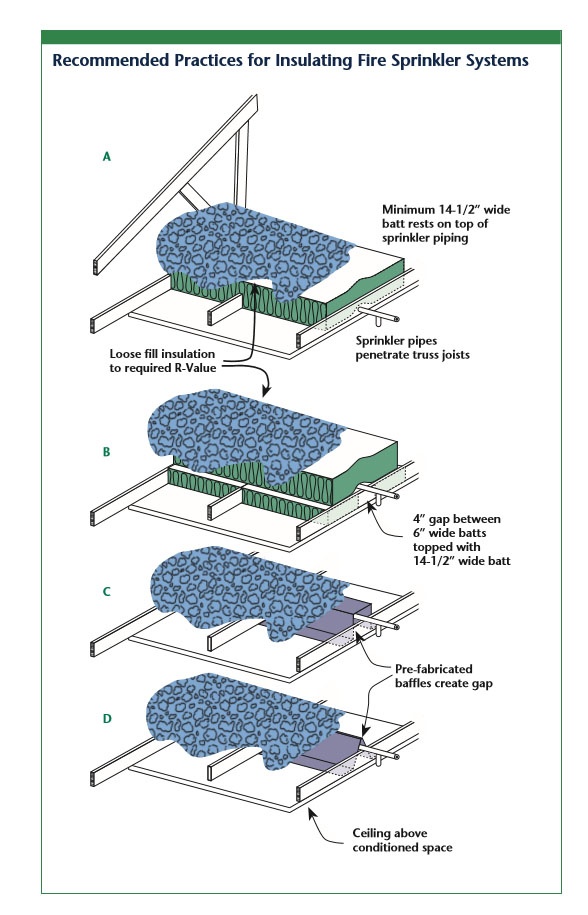With much of the country currently in the grips of a record-breaking cold snap, homeowners may be supplementing their heat sources with portable heating options that increase the risk of fire. Home sprinkler systems are a key defense against fire spread, but they won’t work if sprinkler system pipes are frozen and water damage from pipes may be just as costly as a house fire. One of the primary ways to reduce the risk of sprinkler system freezing is to properly install mineral fiber insulation. Although insulation alone may not prevent freezing when temperatures are cold enough for an extended period, properly installed insulation can significantly reduce the chance of sprinkler systems freezing.
A basic knowledge of heat flow will make clear how insulation is used to reduce the chance of sprinkler pipes freezing.
How Heat Flow Works
Heat moves from warm areas to cold areas, and insulation slows the flow of heat. Insulation does not stop heat flow, so it is important that the pipes are installed in areas within or close to the heated part of the building and insulation is placed between the sprinkler system pipes and the colder outside.
Insulation’s property to slow heat flow is expressed as R-value. The greater the R-value the greater the ability to slow heat flow. It is important that the heating system remains on to supply heat to the building. If the heating system fails and the temperature goes below freezing for a long enough time the heat in the water will move to the colder areas and the pipes may freeze.
Another strategy to reduce the chance of pipes freezing is to use “heat tracing,” which is a flexible electric resistance heating element typically controlled by a thermostat, which is wrapped around the pipe to supply heat when needed, but this will not help when the electric power is out.
Options for Using Insulation to Reduce Freezing
Properly installed mineral fiber insulation is a practical method to reduce the chance of wet pipe systems (or those that always contain water) from freezing. Below are illustrations to show some possible designs for insulation systems for fire sprinkler systems which contain water. Note there are many other acceptable systems which will reduce the chance of sprinkler systems freezing and the systems shown are not guaranteed to prevent pipes from freezing.

In summary, an insulation system for sprinkler systems containing water has three important features:
- Insulation with high R-value between the pipe and the exterior or unconditioned space.
- Materials with very low R-value (g. gypsum board) or preferably nothing between the pipe and the heated area.
- A reliable heating system to replace the heat leaving the building.
These recommended practices are designed to offer options that could reduce the chance of sprinkler systems freezing. For more guidance on the installation of sprinkler systems, refer to the National Fire Protection Association Standard 13D.





